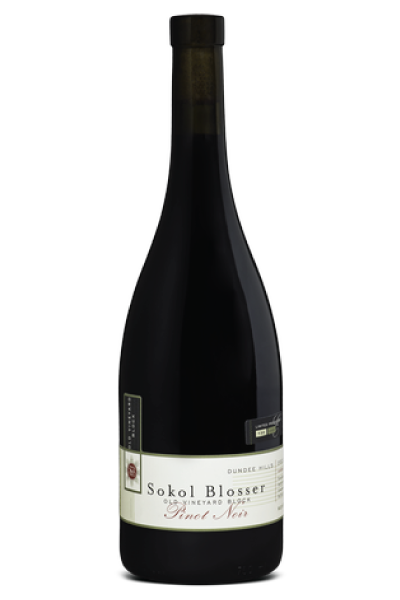
The Vineyard
This first block of Pinot Noir planted by Bill and Susan Sokol Blosser is one section of their first land purchase of December 1970 – a dilapidated 18 acre prune orchard. The 5.5 acre block was planted in small sections between 1972 and 1974 and contains three Pinot Noir clones: Pommard, Wadenswil and Pinot Droit (an upright clone thought at the time to be Gamay Beaujolais). The vines are on their own roots and are spaced 6’ x 10’. The section crests at 375’ elevation, gently slopes east, and is comprised of Jory soil, the distinctively red clay loam of the Red Hills of Dundee.
The Blend
Each year the three different clones in this block are harvested and vinified separately. The 2001 blend is 49% Wadenswil, 30% Pommard and 21% Pinot Droit.
The Winemaking
The grapes were de-stemmed directly into small (one-ton) fermenters, preserving as many whole berries as possible. They were given two days of pre-fermentation maceration, then manually punched-down gently three times per day during an eight day fermentation. Finally, the wines were given a very long (twenty-two day) post-fermentation maceration.
The long post-fermentation maceration is an extremely important component of our winemaking. As the newly fermented wine rests in contact with the skins it extracts color, complexity and tannins. The tannins initially are “short-chain” molecules: hard, green, bitter and aggressive – not what any winemaker wants. The wine tends to get more and more harsh and bitter for the first two to three weeks. If we were to remove the wine from the skins at that point we would be creating a wine with very coarse, harsh tannins which could take many years to (or may never) soften, or require heavy fining. However, if the wine is left for about three weeks, at a certain point the short-chain tannins polymerize (chemically bond) to form long-chain tannins, which are soft, supple and silky. Every fermenter is slightly different. In some the change occurs at nineteen days. In others it may take twenty four days. But in each case it is done by taste and when the transformation has taken place it is time to press. Now the wine has gained tremendous complexity, more stable color, and a beautiful soft, silky texture that makes it accessible (and pleasurable) when young, yet it still has the tannin structure for long-term ageability.
After pressing, the wine went very quickly to barrels where it underwent a very long, slow malolactic fermentation. The barrels, 61% of which were new, were all fine-grain French oak from a number of different Burgundian cooperages. Based on how the flavors and aromas fit together, eight specific barrels of the total of thirty-eight were selected for final inclusion into the blend.
The Wine
The wine from this block is distinctively spicy and harmonious, and shows the intensity, concentration, impressive length and complexity that comes from vines that are over a quarter of a century old.
201 cases produced